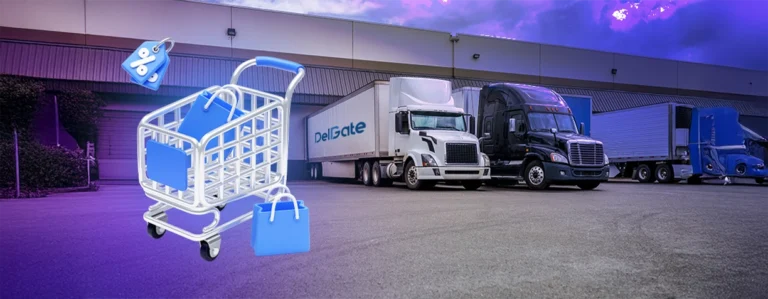In the ever-evolving landscape of logistics and supply chain management, controlling warehouse cost is a pivotal aspect of maintaining a competitive edge and bolstering profitability. With fluctuating warehouse prices, escalating warehouse storage costs, and the specific challenges posed by Amazon warehousing costs, businesses are in a constant search for effective strategies to minimize expenses without compromising on efficiency or customer satisfaction.
Table of Contents
Best Ways to Reduce Warehouse Costs
This comprehensive guide delves into 8 best practices for reducing warehouse costs, offering actionable insights for logistics managers and business owners alike.
1. Optimize Warehouse Space Utilization
Effective space utilization is crucial for minimizing warehouse storage costs. By optimizing the layout, businesses can maximize the use of available space, reducing the need for expansion or external storage solutions. Consider implementing high-density storage systems such as pallet racking, mezzanines, and vertical carousel systems. These can dramatically increase storage capacity within the same footprint, effectively lowering the per-unit storage cost.
2. Leverage Technology and Automation
Investing in warehouse technology and automation can significantly reduce labor costs, one of the largest components of warehouse expenses. Automated storage and retrieval systems (AS/RS), robotic picking systems, and conveyor belts streamline operations, improve accuracy, and speed up processing times. Furthermore, integrating a Warehouse Management System (WMS) can optimize inventory management, reduce errors, and enhance overall operational efficiency, contributing to lower warehouse prices.
3. Implement Lean Inventory Management
Lean inventory management techniques, such as Just-In-Time (JIT) inventory, can substantially reduce holding costs by limiting the amount of inventory stored in the warehouse. This approach minimizes warehouse storage costs by reducing the need for space and mitigating the risk of inventory obsolescence. Employing sophisticated inventory forecasting tools can help maintain optimal inventory levels, ensuring you have enough stock to meet demand without overburdening your storage capacity.
Read more: Warehouse Space vs. Industrial Space – What’s the Difference?
4. Enhance Energy Efficiency
Energy consumption directly impacts warehouse costs. Implementing energy-efficient practices and technologies can lead to significant savings. Upgrading to LED lighting, optimizing heating, ventilation, and air conditioning (HVAC) systems, and installing solar panels are effective strategies for reducing energy bills. Regular maintenance of equipment ensures they operate at peak efficiency, further lowering energy-related warehouse costs.
5. Streamline Picking and Packing Processes
Efficiency in picking and packing operations can lead to substantial reductions in labor costs. Adopting methods such as batch picking, zone picking, or wave picking can minimize travel time and speed up the order fulfillment process. Additionally, using automated packing solutions and optimizing packaging materials can reduce both material costs and shipping expenses, particularly relevant for businesses managing Amazon warehousing costs.
6. Negotiate Supplier Contracts and Shipping Rates
Actively negotiating with suppliers and carriers for better rates can directly decrease warehouse costs. Securing bulk purchase discounts, better payment terms, and more competitive shipping rates can significantly impact the bottom line. Additionally, consolidating shipments and optimizing carrier selection based on cost and service level can reduce outbound shipping costs.
7. Train and Retain a Skilled Workforce
A skilled and efficient workforce is essential for minimizing errors, enhancing productivity, and reducing operational costs. Investing in training programs improves employee proficiency and operational efficiency, leading to lower warehouse costs. Furthermore, focusing on employee retention can reduce turnover-related expenses, such as recruiting, hiring, and training new staff, thereby stabilizing operational efficiency and costs.
8. Regularly Review and Adjust Strategies
The warehousing and logistics landscape is dynamic, with fluctuating demand, changing market conditions, and evolving technologies. Regularly reviewing and adjusting warehousing strategies can help businesses stay ahead of trends, adapt to new challenges, and continually optimize operations to reduce costs. This includes reassessing warehouse layouts, inventory levels, technology use, and operational processes to identify areas for improvement and cost reduction.
Read more: Types of Warehouses: 15 Essential Varieties for Ecommerce Success
Conclusion
Reducing warehouse costs is a multifaceted challenge that requires strategic planning, investment in technology, and continuous optimization of operations. By focusing on efficient space utilization, leveraging automation, implementing lean inventory management, enhancing energy efficiency, streamlining processes, negotiating better rates, investing in workforce development, and regularly reviewing operational strategies, businesses can significantly lower warehouse prices and storage costs.
Particularly in managing Amazon warehousing costs, these strategies are vital for ensuring competitiveness and profitability in the complex world of e-commerce logistics. Through diligent application of these best practices, companies can achieve a leaner, more cost-effective warehouse operation, poised for success in the modern marketplace.
Read more: Understanding the Dynamics of Virtual Warehouses for Efficient Inventory Management
FAQ:
1. What role does employee training play in reducing warehouse costs?
Training enhances employees’ efficiency and productivity, reduces errors, and improves safety, which collectively can lead to significant cost savings in warehouse operations.
2. How can technology help in reducing warehouse costs
Technology, such as Warehouse Management Systems (WMS) and automation tools like Automated Storage and Retrieval Systems (AS/RS), can streamline operations, improve inventory accuracy, and reduce labor costs significantly.




